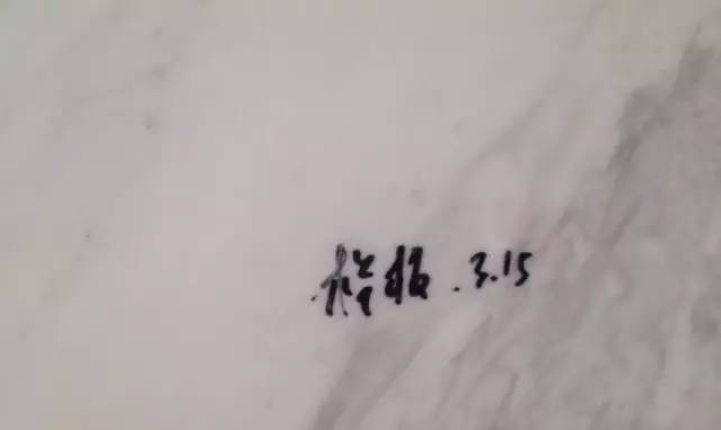The Ultimate Guide to Removing Marker Stains from Stone Surfaces
Stone materials undergo multiple processes—from quarrying and design processing to transportation, installation, grinding, renovation, and polishing—before being put into use. During these stages, markers are often used for annotations. However, removing these marks can be challenging. This article provides practical solutions for cleaning various types of marker stains from stone surfaces.

Why Are Markers Used on Stone?
- Sequencing: Natural marble veins must be matched during installation. Numbering ensures proper alignment for optimal decorative effects.
- Functional Marking: Notes for electrical outlets, pipelines, or other installations are often drawn directly on the stone.
- Labeling: Information such as stone type, origin, or advertisements may be written on the surface.
Cleaning Methods Based on Marker Type
Different marker materials require tailored cleaning approaches:

1. Crayon Marks
Crayon wax adheres to stone surfaces. Cleaning methods vary by finish:
- Polished Surfaces: Use steel wool to gently scrub off the wax.
- Matte or Textured Surfaces: Wax embeds into uneven textures. Apply wax remover to a soft cloth and repeatedly wipe the affected area until clean.
2. Water-Based Marker Stains
Water-soluble pigments can be treated with specialized products:
- Spray color remover onto the stained area.
- Wipe with a soft cloth. Repeat for deeper stains.
3. Oil-Based Markers & Ink Lines
Oil-based inks penetrate stone pores, creating stubborn stains. Use DR-stone adhesive remover with this process:
- Isolate the area with painter’s tape.
- Spray DR-stone remover onto the stain.
- Cover with clean gauze or layered paper towels.
- Re-spray the covering material.
- Seal with plastic wrap and secure with tape.
- Remove after 24 hours. Repeat 2–3 times if needed.
4. Carpenter Pencil Marks
Pencil marks resist water, alcohol, and standard cleaners. The simplest solution?
- Use an eraser to gently rub off the graphite.
By following these targeted techniques, you can effectively restore stone surfaces to their original condition, ensuring both functionality and aesthetics are preserved.
 China Natural Stone Manufacturer, Supplier, Wholesaler and Exporter
China Natural Stone Manufacturer, Supplier, Wholesaler and Exporter